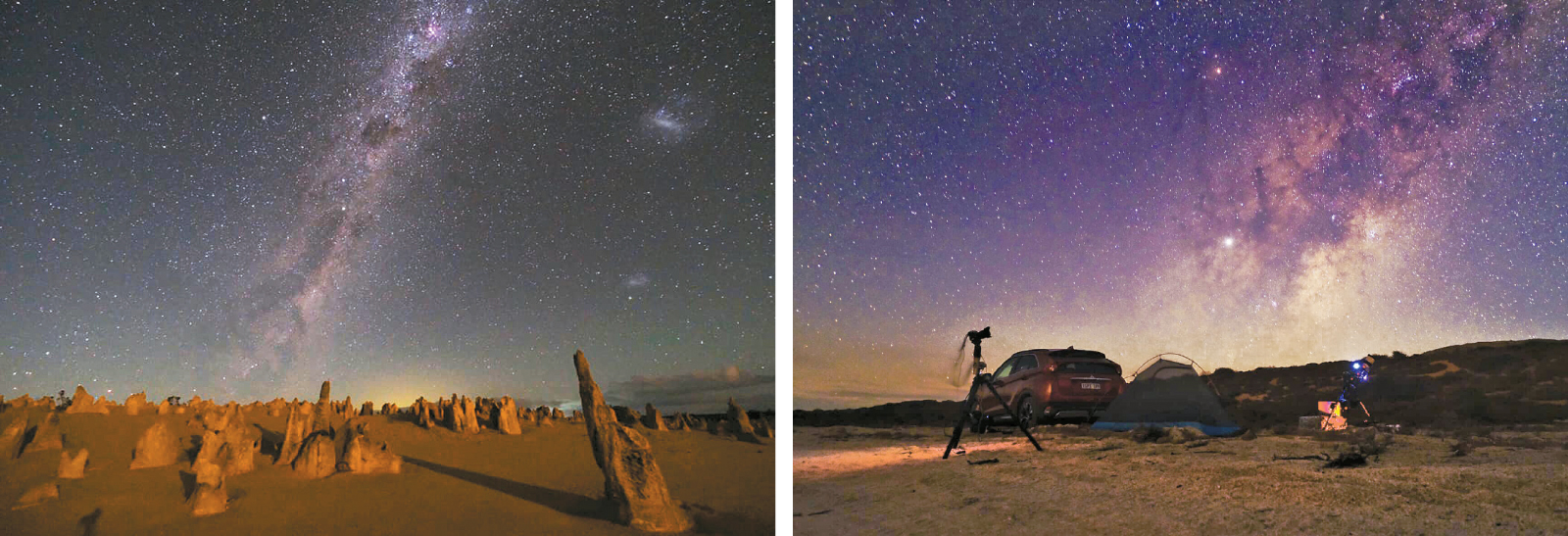Stargazing boom leads to trips to distant lands

Left: The Milky Way appears above Shark Bay in Western Australia. Right: Perth, Western Australia, has become a popular spot for Korean stargazers. [HOBYM OBSERVATORY]
The 51-year-old amateur astronomer isn’t alone in his adventures.
Stargazing tourism and amateur astronomy have recently sprung up as popular hobbies among Koreans.
One popular amateur astronomy blog on Naver has over 48,000 members, with information on astronomy equipment and even itinerary sharing among members for overseas stargazing trips.
“Our membership is growing whenever there is an astronomical event, such as discovering a black hole or a solar eclipse,” explained Park Dae-young, an official at the Gwacheon National Science Museum and a member of the blog. “People not only go camping to look at stars or the Milky Way but there are also those who travel for special astronomical events overseas to places like Hawaii, Chile, Australia or Mongolia.”
Popularity is growing, and hobbyists like Park who traveled to Western Australia last month said that the trips are cheaper and more special than ordinary trips overseas.
The desert terrain of Western Australia is a perfect location to stargaze due to its arid climate and distance from urban environments.
“There was no light pollution and no dust in the clear night sky, so the Milky Way was clearly visible,” said Park.
The 10-year stargazing veteran said he stayed in a tent in an open field for 10 days of the two-week trip. The trip cost 2.5 million won ($2,100), including airfare.
The increase in amateur astronomy hobbyists has also led to a boom in astronomy photography.
Last month, the Korea Astronomy and Space Science Institute held a photography contest in which 161 pictures were submitted.
While many of the submissions were taken with professional equipment, they also included those taken with ordinary cameras.
“We held our 27th contest this year. There were more submissions compared to the past, and astronomy photography has moved from an enthusiast’s passion to an ordinary hobby,” explained a spokesperson for the institute.
The Gwacheon National Science Museum will open a nighttime astronomy program on May 22. It will also hold an astronomy photography class for beginners.
BY CHOI JOON-HO [chae.yunhwan@joongang.co.kr]










with the Korea JoongAng Daily
To write comments, please log in to one of the accounts.
Standards Board Policy (0/250자)